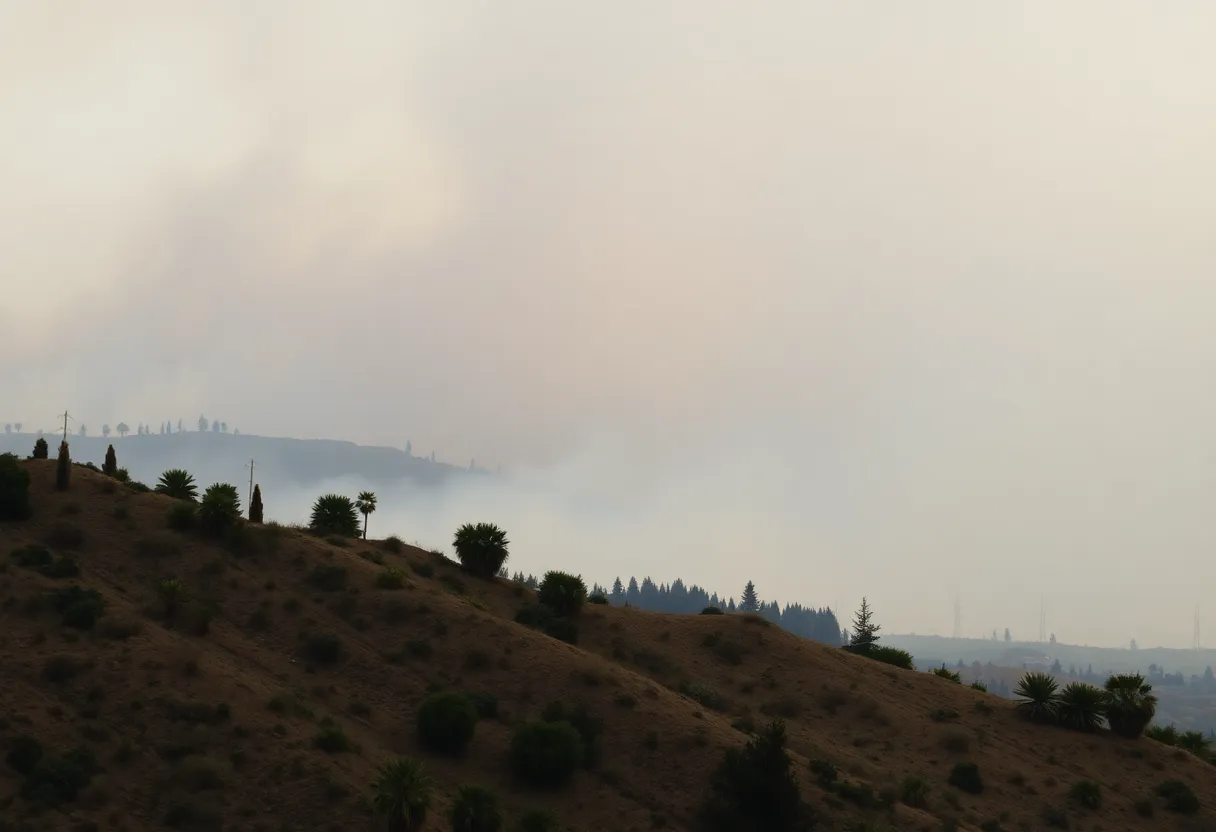News Summary
Southern California Residents on High Alert: Are Wildfires Hiding More Than Just Smoke?
As wildfires in Southern California continue to blaze, residents are feeling the heat—not only from the flames but also from the hidden dangers lurking in the air. Recent incidents, including the Palisades Fire and Eaton Fire, have led to alarming revelations about what is really present in the atmosphere, raising serious concerns regarding air quality.
AQI Ratings: What They Don’t Tell You
While the Air Quality Index (AQI) may display “good” ratings, this can be misleading. It does not account for toxic substances that may not be traditionally measured. As the ash settles and smoke clears, pollutants like lead, arsenic, and asbestos can seep into the atmosphere, continuing to pose significant health risks even when the air seems clear.
Residents are urged to exercise caution. Just because the AQI is in the green does not mean everything is safe. The invisible threads of dangerous particulate matter can linger long after a wildfire has been extinguished.
Understanding PM 2.5: The Silent Threat
Among the many dangerous particles in the aftermath of a wildfire, PM 2.5 (particulate matter) is a major concern. These microscopic particles are up to 70% smaller than the diameter of human hair, allowing them to penetrate deep into the lungs and cause discomfort and potential health complications. While residents may feel tempted to use loose-fitting or fabric masks, these do not offer adequate protection against the harmful effects of PM 2.5 and other particulates released during wildfires.
What You Need to Know Post-Fire
The risk of contamination doesn’t end when the flames are doused. The air may remain filled with hazardous materials for weeks or even months following extinguishment. Factors such as Santa Ana winds can exacerbate the situation by carrying ash and toxic material across Southern California, afflicting a broader community.
Health officials advise limiting outdoor activities and wearing proper protective gear—including tightly fitted N-95 masks and gloves—when cleaning up damage or debris. These precautions can vastly improve safety when conditions appear smoky or ash is present.
Safe Cleaning Practices: Avoiding Further Risks
When it comes to clean up, improper handling can magnify health threats. Residents should follow recommended practices: mist ash with water before sweeping and avoid using power tools such as leaf blowers that could stir particles back into the air. This step is critical to reducing exposure to ash, which contains toxic and carcinogenic materials.
For safe disposal, ash must be placed into a sealed plastic bag or container to prevent it from being reintroduced into the air. Monitoring local air quality conditions consistently is essential, particularly when wildfires are active.
Stay Informed and Stay Safe!
In light of ongoing wildfires and their aftermath, public advisories around air quality and health safety remain active. Residents are encouraged to follow these updates closely, as changes in weather can lead to sudden shifts in air quality and health recommendations.
Protecting health and well-being is a community responsibility, especially for vulnerable populations. The fight against wildfire-related contamination must include awareness, caution, and proactive measures. Communities in Southern California are urged to come together and prioritize health safety in this challenging environment.
Deeper Dive: News & Info About This Topic
HERE Resources
Danger Looms: As Natural Disasters Rise, So Do Asbestos Exposure Risks
Edison Public Library to Undergo Asbestos Removal, Closure Scheduled
Proposed FDA Rule to Tighten Regulations on Talc-Containing Cosmetics Due to Asbestos Concerns
Asbestos Risks Soar Amid Ongoing Conflict in Israel
FDA Takes Big Steps to Tackle Asbestos in Talc
FDA Proposes Bold Move to Combat Asbestos in Talc-Containing Cosmetics
FDA Takes Bold Steps to Tackle Asbestos in Talc-containing Cosmetics
FDA Proposes Life-Saving Rules to Tackle Asbestos in Cosmetics
New FDA Proposal Targets Asbestos in Talc-Containing Cosmetics
Asbestos Scandal Erupts at Long Beach’s Colorado Lagoon Construction Site



















